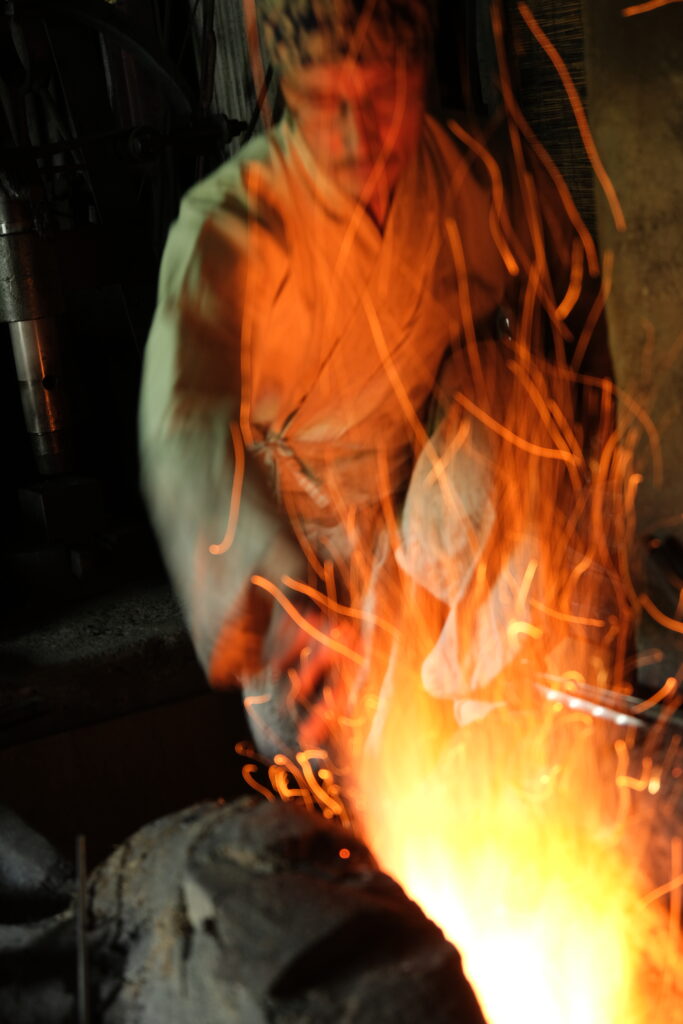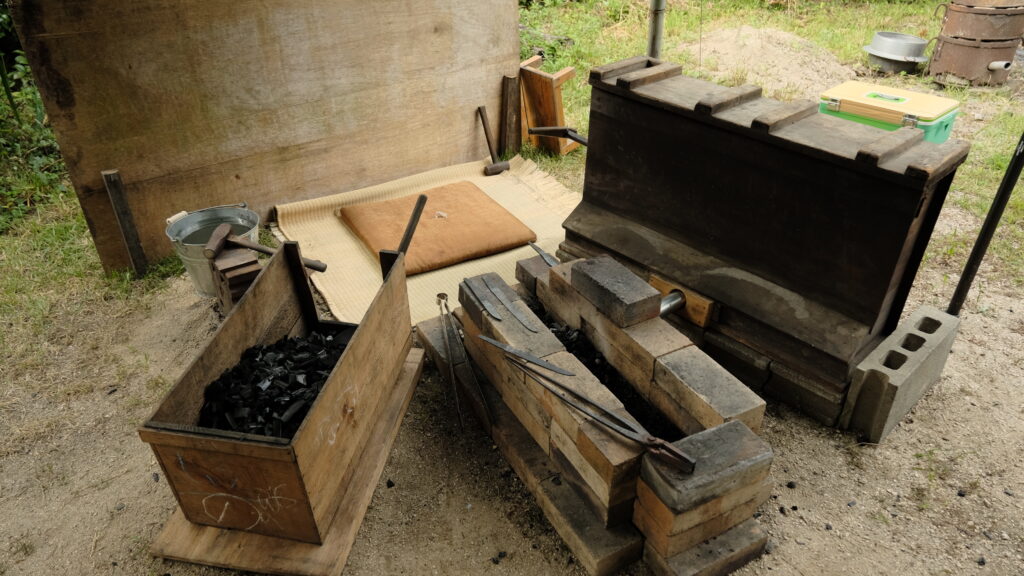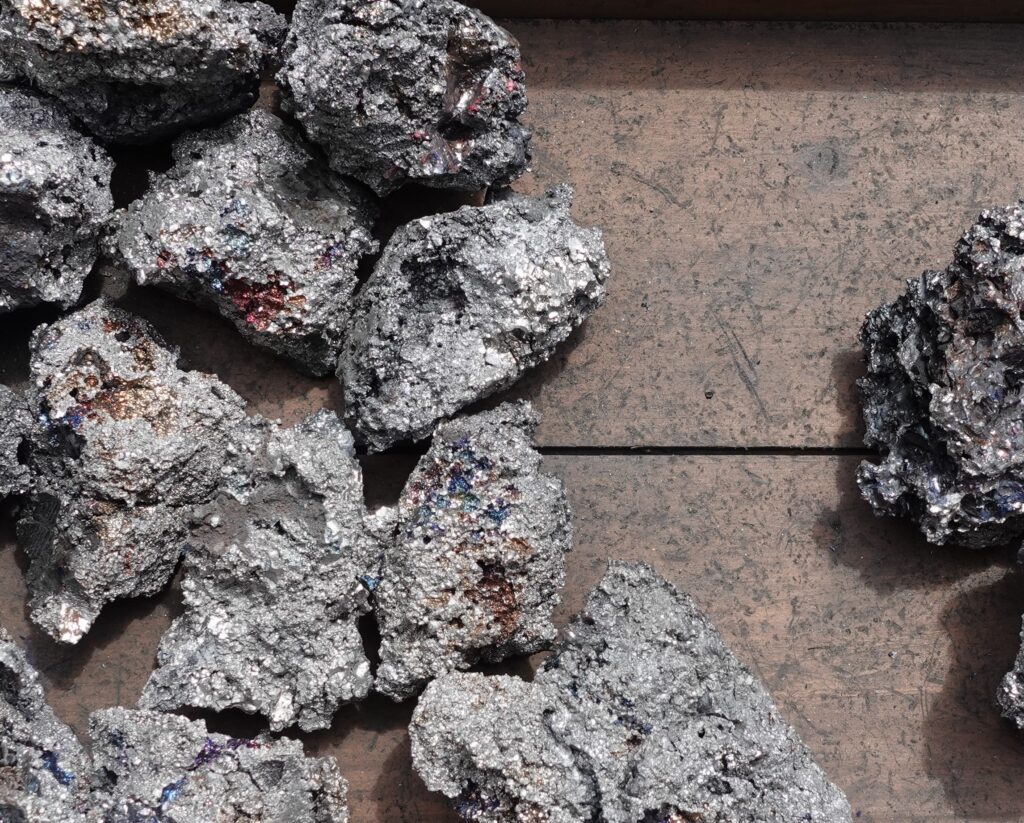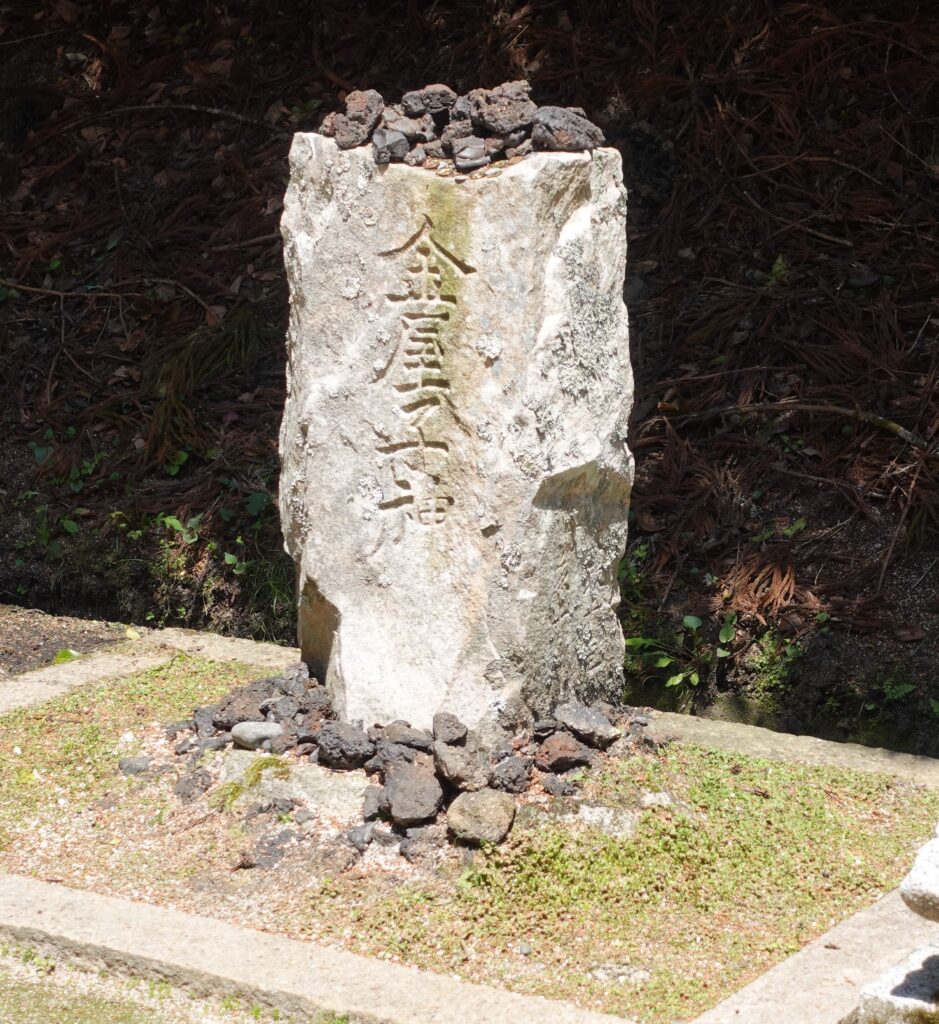A “Japanese mini sword knife” made using “Tamahagane” forged by a swordsmith.
We held a workshop where you can see and actually experience the craftsmanship of a swordsmith!
WORKSHOP DAY 1
ORIENTATION:Tour of the smithy and safety orientation
PART 1 : Learn about “tamahagane”
PART 2 : Demonstration of “tamatsubushi” by the swordsmith + video of “folding”
PART 3 : Making a “Japanese mini sword knife” — Sunobe
PART 4 : Making a “Japanese mini sword knife” — Hizukuri
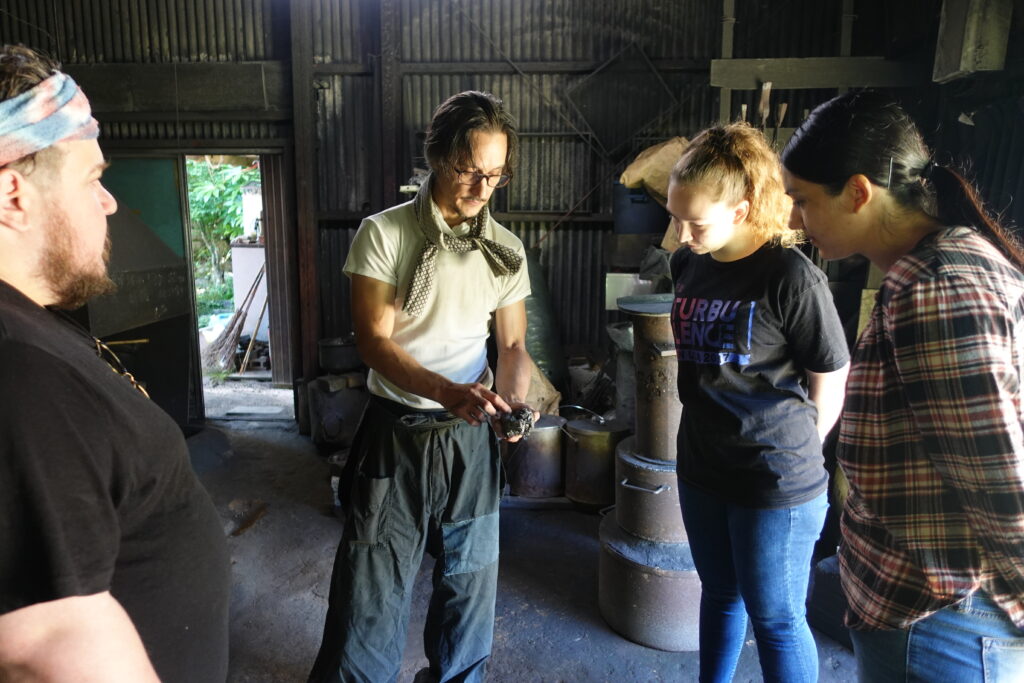
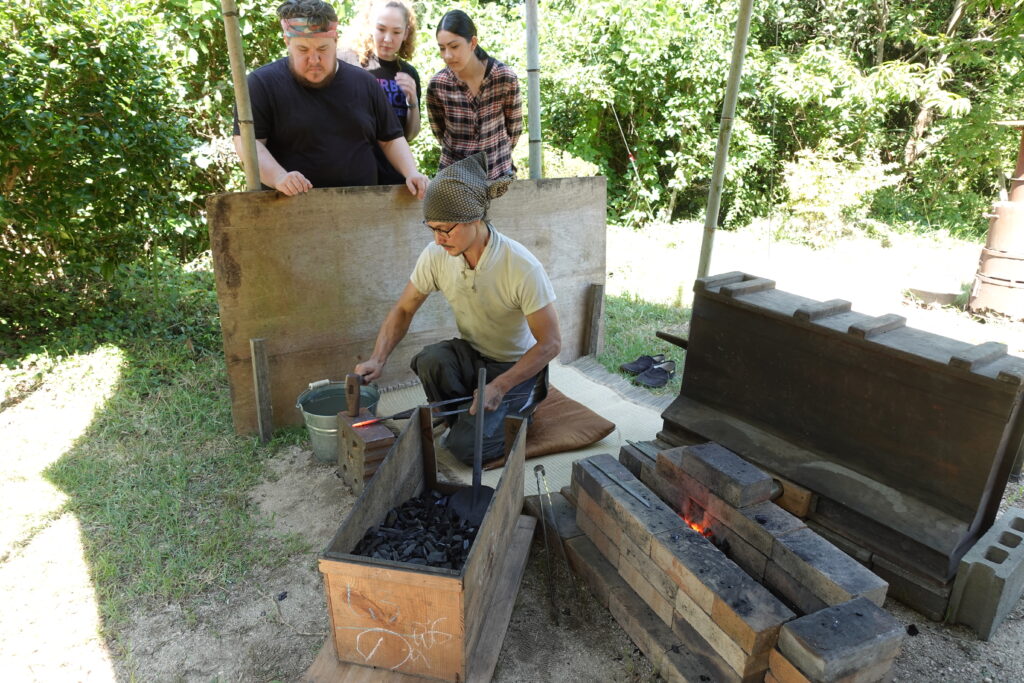
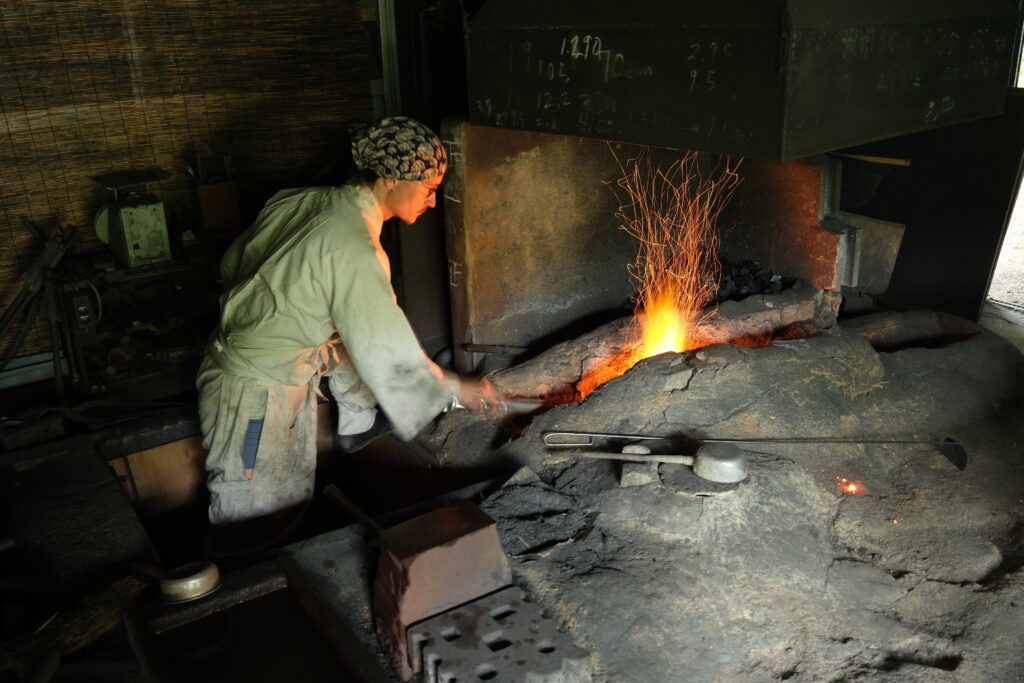
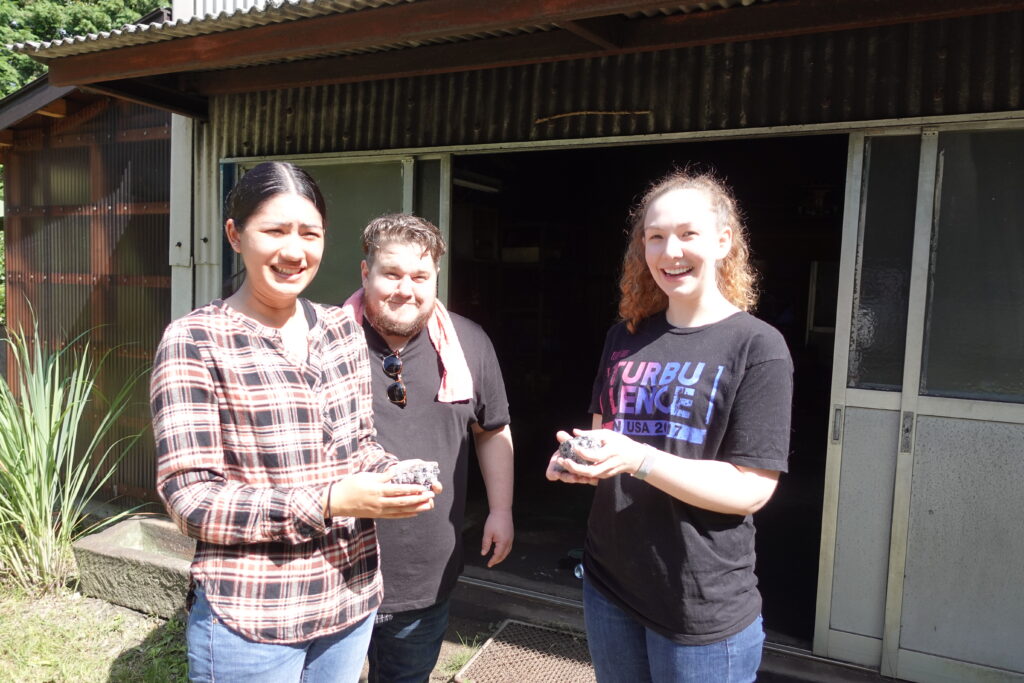
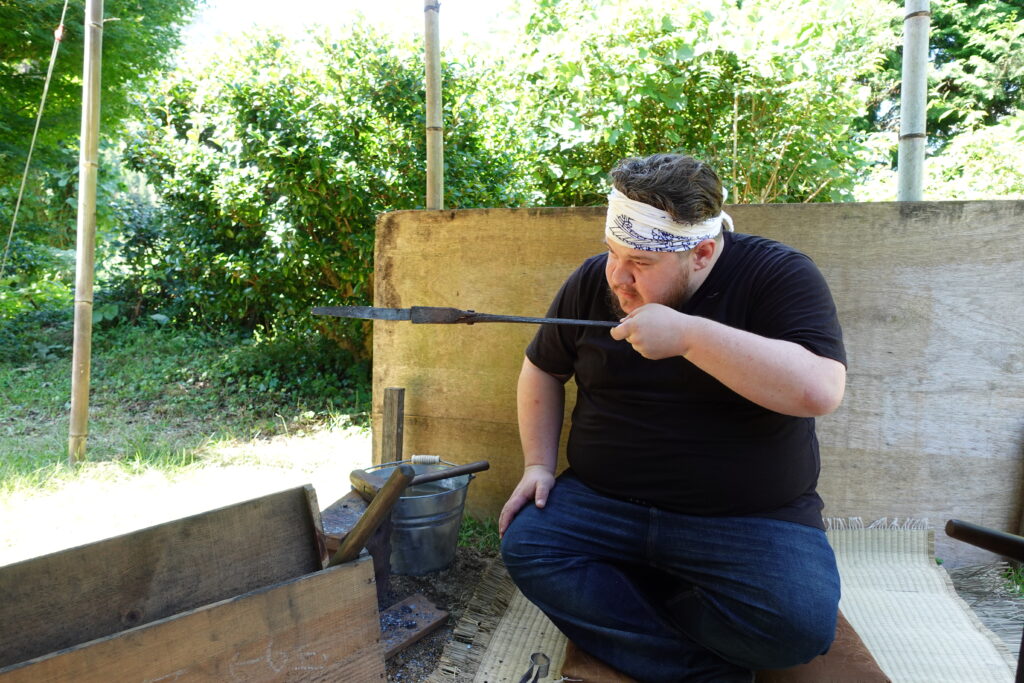
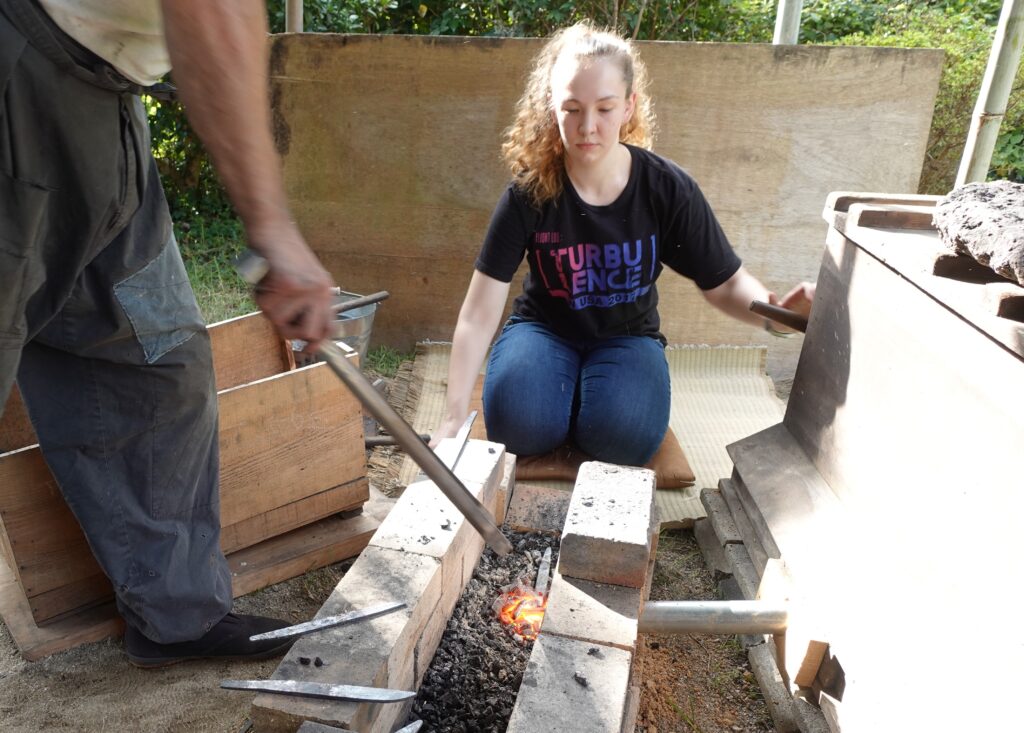
PART 1:Learn about “tamahagane”
After a tour of the smithy, Yasha Yukawa explained the history and production of “tamahagane,” a raw material of Japanese swords, to the participants. The participants then experienced the texture, color and weight of the “tamahagane” by actually holding it.
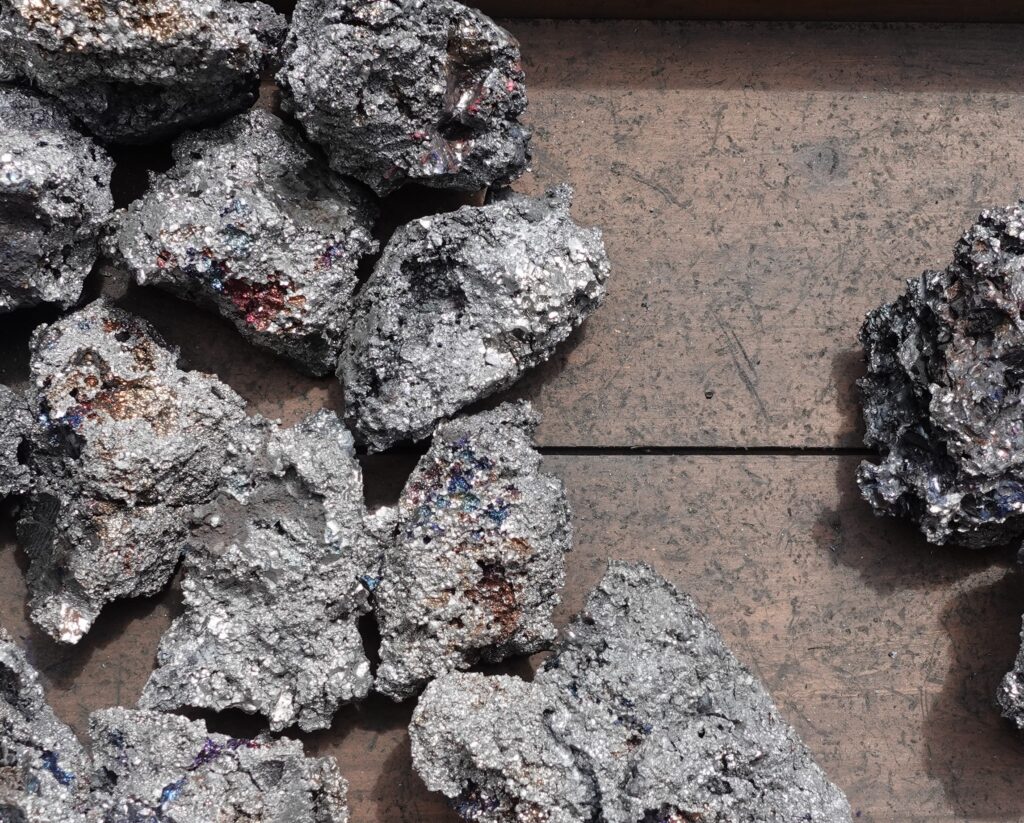
PART 2 : Demonstration of “tamatsubushi” by the swordsmith + video of “folding”
After explaining the characteristics of “tamahagane,” the swordsmith gave a demonstration of “tamatsubushi” to show the process of forging “tamahagane,” used when actually making a Japanese sword, by flattening it to remove impurities. Then, the participants deepened their understanding while watching a video of the folding of the “tamahagane”.
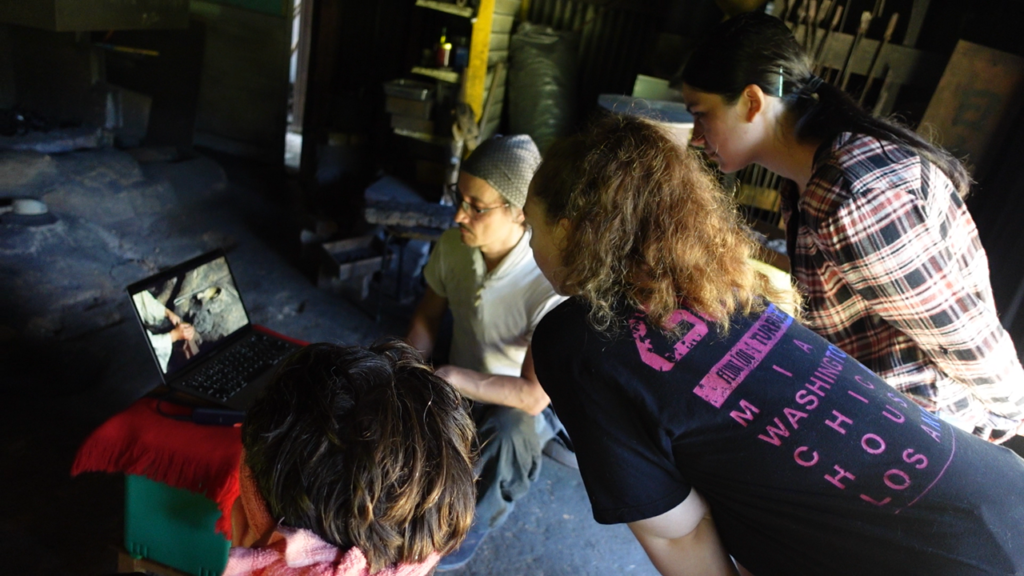
PART 3 : Making a “Japanese mini sword knife” — Sunobe
The “mini sword knife” was made by hitting hot iron on an anvil using the on premise fire bed, which used charcoal to burn, and a traditional bellow. First, the participants learned how to use the equipment from the swordsmith. Then they did “sunobe,” which is the process of lengthening the knife to the proper dimensions.
PART 4 : Making a “Japanese mini sword knife” — Hizukuri
“Hizukuri” is one of the most difficult processes when making a Japanese sword, where a hammer is used to create the ridge on the side of the blade. The participants were able to experience a part of “hizukuri.” To make the ridge on the side of the blade, the knife must be placed at the same angle on both sides against the anvil. This was a much harder process than imagined and everyone was amazed by the techniques involved in making a traditional sword. The knives were slightly deformed but Yasha Yukawa fixed them with his skills and the first day of the workshop ended.
Workshop Participants
The three workshop participants Michaela, Daphne, and Bryan are English teachers from America who live in Yamaguchi prefecture. Michaela and Daphne both have black belts in karate and Bryan has made a utility knife in Echizen with shirogami before. All three of them participated because they are interested in traditional Japanese culture and Japanese swords.

